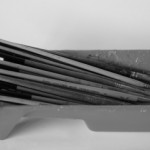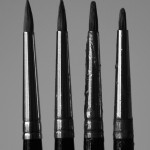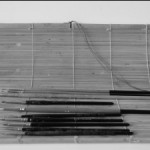Linseed Oil and Caring for Brushes
February 11th, 2009Turpentine in a warm studio in winter. Yuck. Turpentine, even a small amount, gives me this pinched feeling, a bit of a dizzy feeling. Then a headache. Do I have an allergy to turpentine, or is this just a normal reaction?
I was happy when, several years ago, I was able to sidestep the whole turpentine problem. I learned, through reading translations of old manuscripts, and looking at paintings, that the old masters used a different approach to cleaning and storing their brushes. They used linseed oil, the same oil they painted with. You might even say that the use of turpentine is a modern aberration. It’s not necessary for great oil painting, it makes a lot of things more difficult and inconvenient.
In the pages below I discuss how I use linseed oil to clean and store my brushes. One point is very important, however: under certain conditions, linseed oil can combust spontaneously. I’ve never seen this happen, or even heard of it happening to an artist, but I always make sure to keep rags and paper towels with linseed oil on them in a sealed metal container before disposing in a safe manner.
1. Storing Brushes in Linseed Oil
2. Cleaning Brushes with Linseed Oil
4. Taking Brushes away from the Studio



